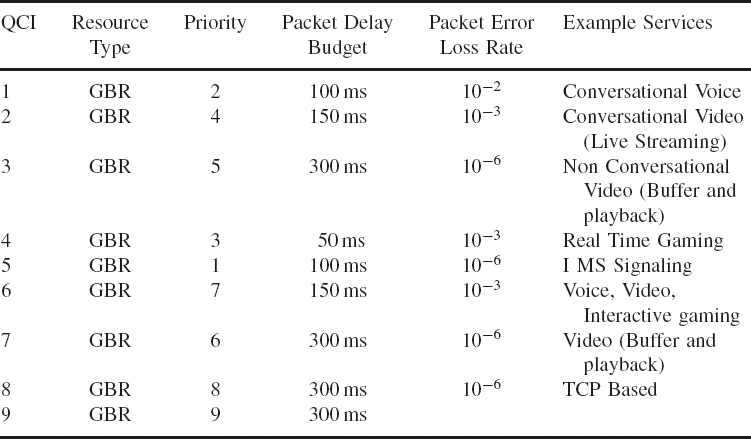Classification
LTE classifies flows into GBR and non-GBR, LTE also differentiates between Radio Bearers, S1 Bearers and EPS bearers. A radio bearer is the over-the-air connection. An S1 bearer is the connection between the eNodeB and the MME/SGW. Finally, the EPS bearer is established between the EPS and the MME and the SGW, and the SGW and the PGW.
Table 12.1 An example of QoS classes identified by the QCI. Reproduced by permission of © 2011 3GPP. Further use is strictly prohibited
A default bearer is initiated and established at the startup time to carry all traffic. The default bearer is a non-GBR bearer, and does not provide bit rate guarantees. A dedicated bearer can be either a GBR or a non-GBR bearer. If a GBR, it can specify the guarantee dbit rate, packet delay and packet loss error rate. Each dedicated bearer is characterized by a TFT with QoS parameters associated to it. An uplink TFT is used to map the UE uplink traffic to specific QoS parameters, with the mapping carried out at both the eNodeB and the UE. Mapping for the downlink TFT is carried out at the SGW or the PGW. Table 12.1 gives an example of a traffic classification based on the QoS parameters defined the LTE QoS framework. Each class is identified by a scalar number called the QoS class Identifier (QCI). A QCI is identifies a group of QoS parameters describing the packet forwarding treatment in terms of priority, allowable delay, and packet error rate.

